Tamil Nadu is famous for many things, from Rajnikanth to idly-dosa and from its many temples to silk sarees and Carnatic music. But the state is also home to some of the greatest empires and dynasties that existed on the Indian subcontinent. The Pallavas who built the temples in Mahabalipuram; the seafaring Pandyas who developed trade relationships with ancient Europe; the mighty Cholas who built an empire which at one point stretched from present day Lakshadweep to Sri Lanka; and the Nayakan Dynasty who were connoisseurs of the arts and culture.
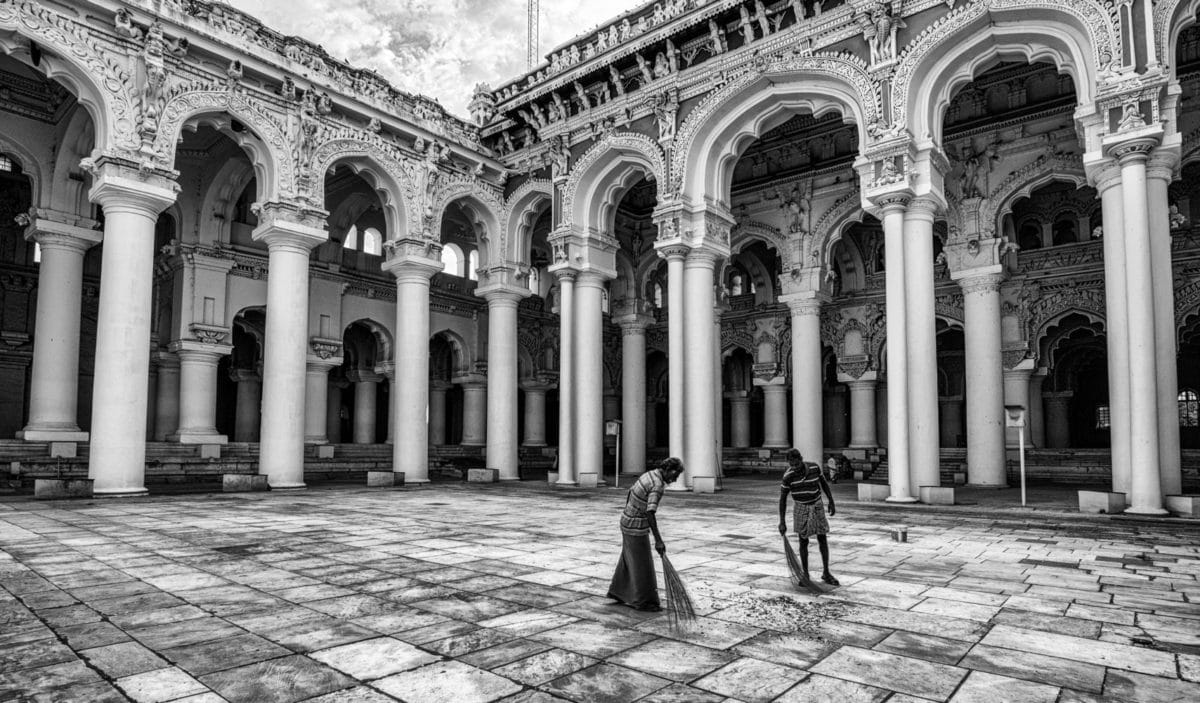
Emerging after the downfall of the Vijaynagar Empires, the Nayaks of Madurai and Tanjore, were known to be more benevolent rulers than their many predecessors. They ruled from 1529-1736 and concentrated on the arts, learning and administrative reform. They were also instrumental in the revival of the Meenakshi temple which was ransacked and destroyed during raids by the Delhi Sultanate. King Thirumalai Nayak, the most famous Nayak ruler, made Madurai his capital and patronised the arts and diverse religious discourse. He welcomed academics, scholars and philosophers from other parts of the world and encouraged discussions on varying subjects. He traded with the Danish and the Portuguese, and travelled widely across the country, examining and learning from the Maratha Empire and the Mughal Empire.
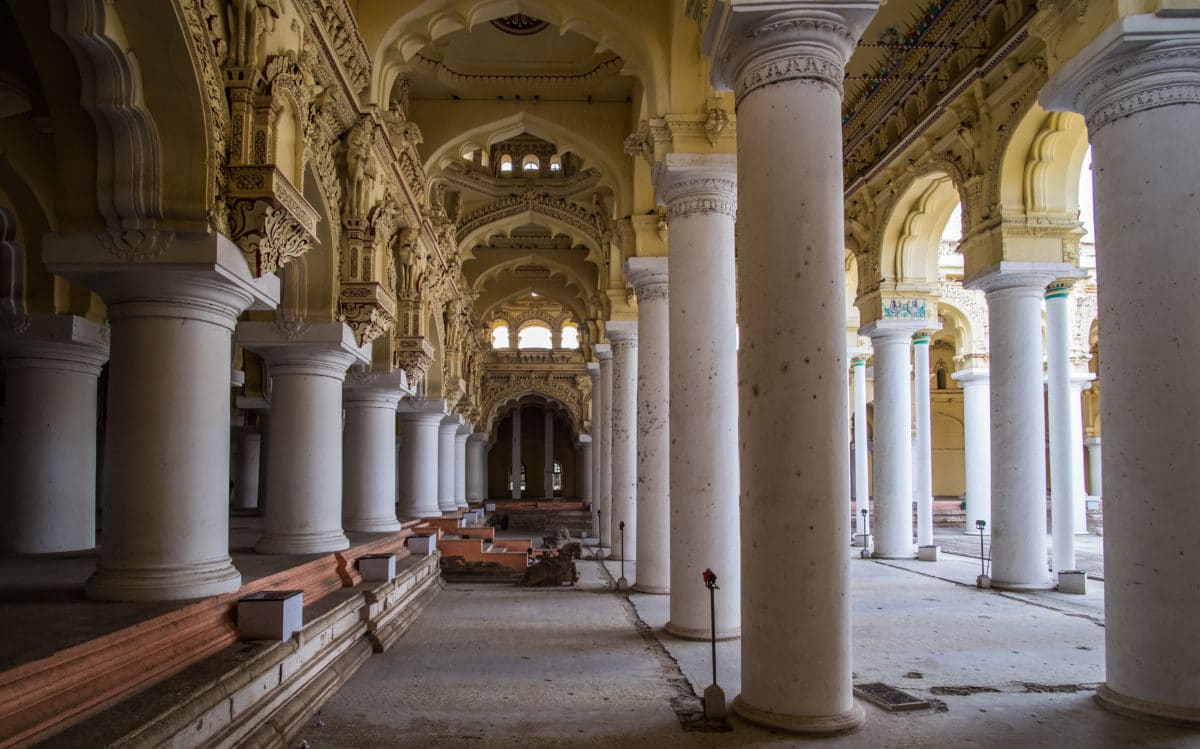
It is his palace that we were awed by in Madurai, a city more famous for the imposing Meenakshi Amman Temple and the mouthwatering, one of a kind, Murugan Idly. With high towering columns and intricately carved ceilings, King Thirumalai’s palace is beautiful and unique. Built in a traditional Dravidian style, the palace has a European feel to it, which can be attributed to the Italian architect the King consulted with. You can also see influences of his travels around India, in the intricate carvings around the columns, the curved arches and the Rajput style of windows and latticed screens.
The palace is clean and well maintained, and even has a mini museum of statues and carvings of various Hindu deities dating back hundreds of years.
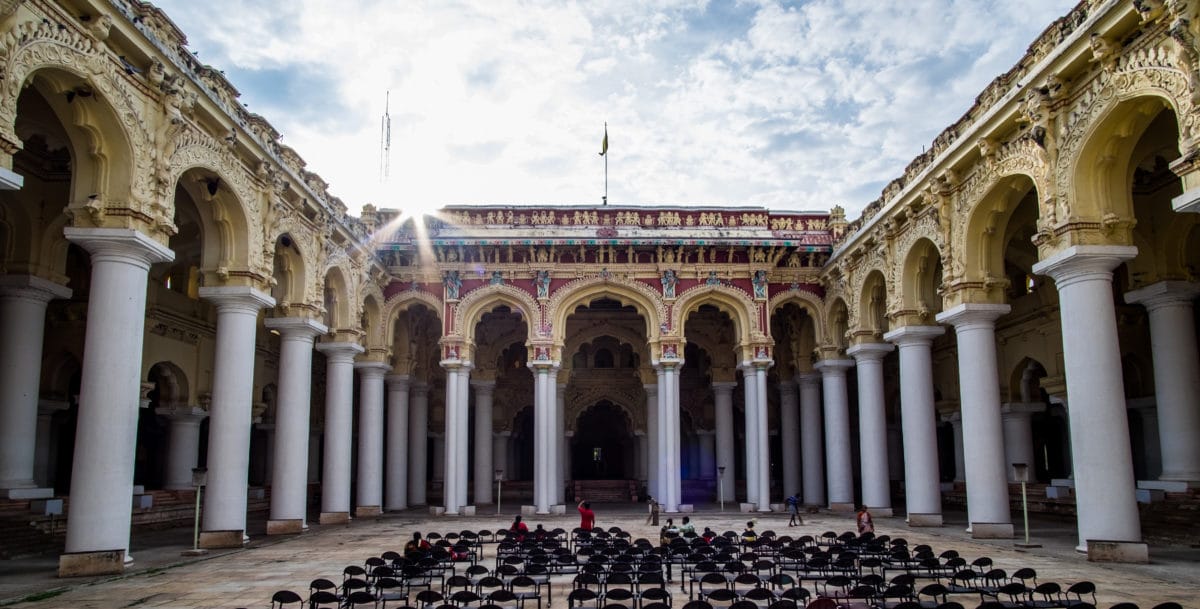
If you find yourself in Madurai and temples are not your cup of tea, we suggest a short, albeit slightly pricey auto ride to the King Thirumalai Palace, and a few minutes to immerse yourself in a different part of India’s varied history. Follow this up with some fantastic coffee at the original Murugan Idly shop and the best idly’s you will ever eat. Though be forewarned, it will be very hard to eat another idly once you have eaten Murugan’s!
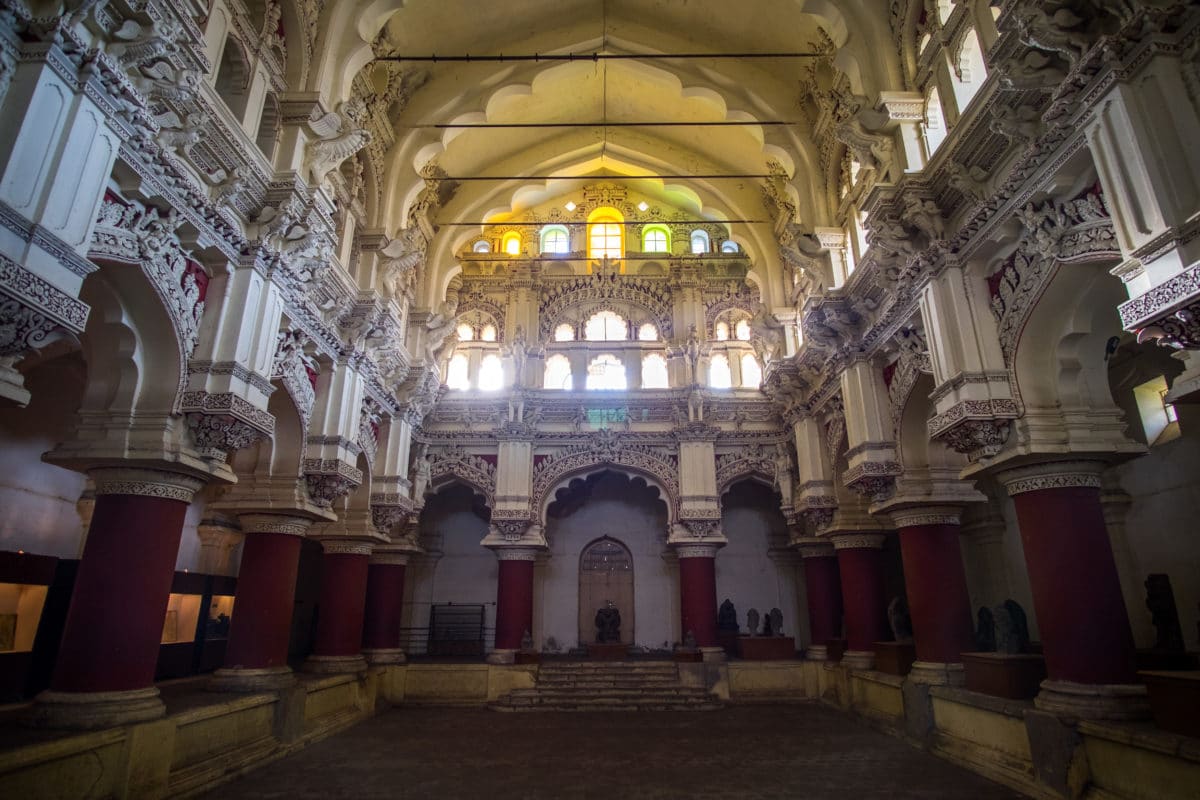
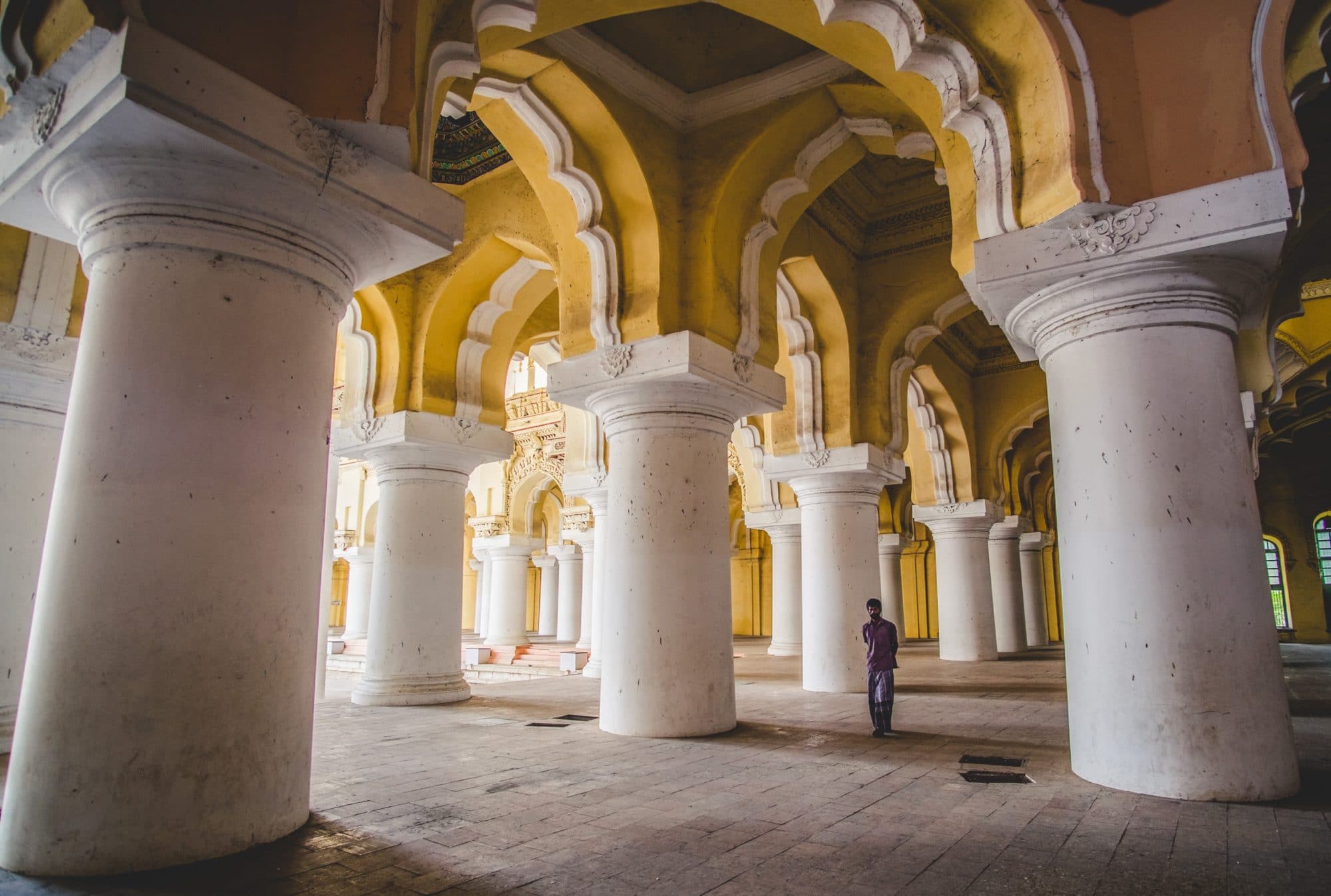
Some other factoids about the palace. The pillars in the thousand pillared hall were made with lime plaster and other naturally available materials which seem to have withstood the ravages of time. It is also believed that it is difficult to put ones hands around the pillars so that the hands meet. There is a third story about the palace. Apparently, one of the rooms was so well fortified that the king boasted that no thief could enter the room and get away without being captured. A thief decided to test this and climbed to the roof with a land monitor. He cut out a part of the roof and got the land monitor to use its salivary glands and stick itself to the ceiling. Tying a rope to the land monitor he lowered himself to the room, collected the goodies and vanished. Why land monitor? Apparently when a land monitor sticks itself to something it cannot be pulled apart!